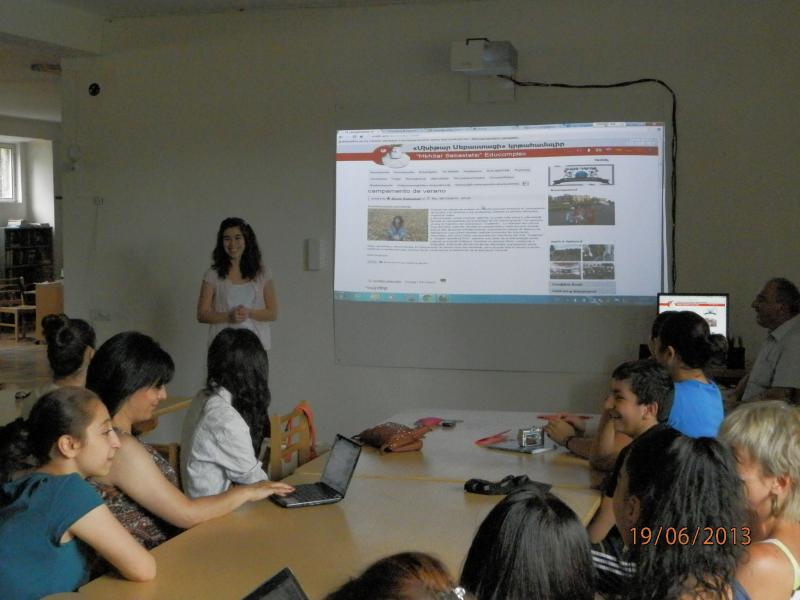Here are some classroom activities which help the students to create texts by expressing their own opinions about an article on the school website and also by making written comments on it both in the native language and in English
These activities also help to create English texts by translating the articles on the school website.
These activities are based on our educational project: Creating the English page of the www.mskh.am
This is the website of the “Mkhitar Sebastatsi” Educomplex. The website is in eight languages: Armenian, English, Russian, Georgian, German, Arabic, Turkish and Spanish. The first and the richest page is, of course, in Armenian because it is our mother tongue. In fact our school website is a real virtual area for the students to create texts in different foreign languages. I am responsible for the English page and my aim is to make its content as close to the Armenian page as possible. But it is not my basic aim. Were it my basic aim I should myself translate all the school website articles into English or the school administration should hire a professional translator. My basic aim is to enable my students to create their own texts. That is the basic feature of the 21st century education: from content consumption to content creation.
The educational environment for this activity
The classroom has a wireless local area network Wi-Fi and is equipped with the teacher’s PC connected with a projector which is fixed on the ceiling and a white board. All the students (12-15) have their own notebook/netbooks or tablet computers.
The organization of the activity
To achieve my aim I have to do some preparation work. The students are taught the right ways of using the following online dictionaries: http://translate.google.ru/?hl=ru&tab=wT#hy/en/ ; http://www.translator.am/am/index.html ; http://www.lingvo-online.ru/ru
Before choosing the articles for translation I organize short discussions of the most important and interesting articles which have been published on the school website for the last three days. The texts are in Armenian but the discussions are done in English. In this way the students practice speaking on the topics which they are going to translate. As far as each student has his/her PC they can open different articles read them and offer them to be discussed. The chosen articles one by one appear on the white board and a series of discussions begins. After the discussions the students are given 5-7 minutes to write down their Armenian comments in the comment sections of the chosen articles.
Then the class is divided into 3-4 working groups with 3-4 students in each. The number of working groups corresponds to the number of chosen articles. Each group has its leader who has the highest competency in English among the members of that group. The leader usually works with the Microsoft Office program. He has is page opened with the Armenian text. His team members open this or that online dictionary and quickly help the leader with translations of complicated words and expressions. I myself go from group to group making necessary corrections in their English texts. There is a noise in the classroom but it is a lovely noise of students who are busy creating a new content in English.
The Armenian sentences which have already been translated are deleted. The texts are published on the English page of our school website when I have edited them. When the texts are published on the English page, the students are given 5-7 minutes to write their comments in English. It is easy for them to do it because they already know the content of the article very well. So this activity also promotes students’ creative writing abilities.

